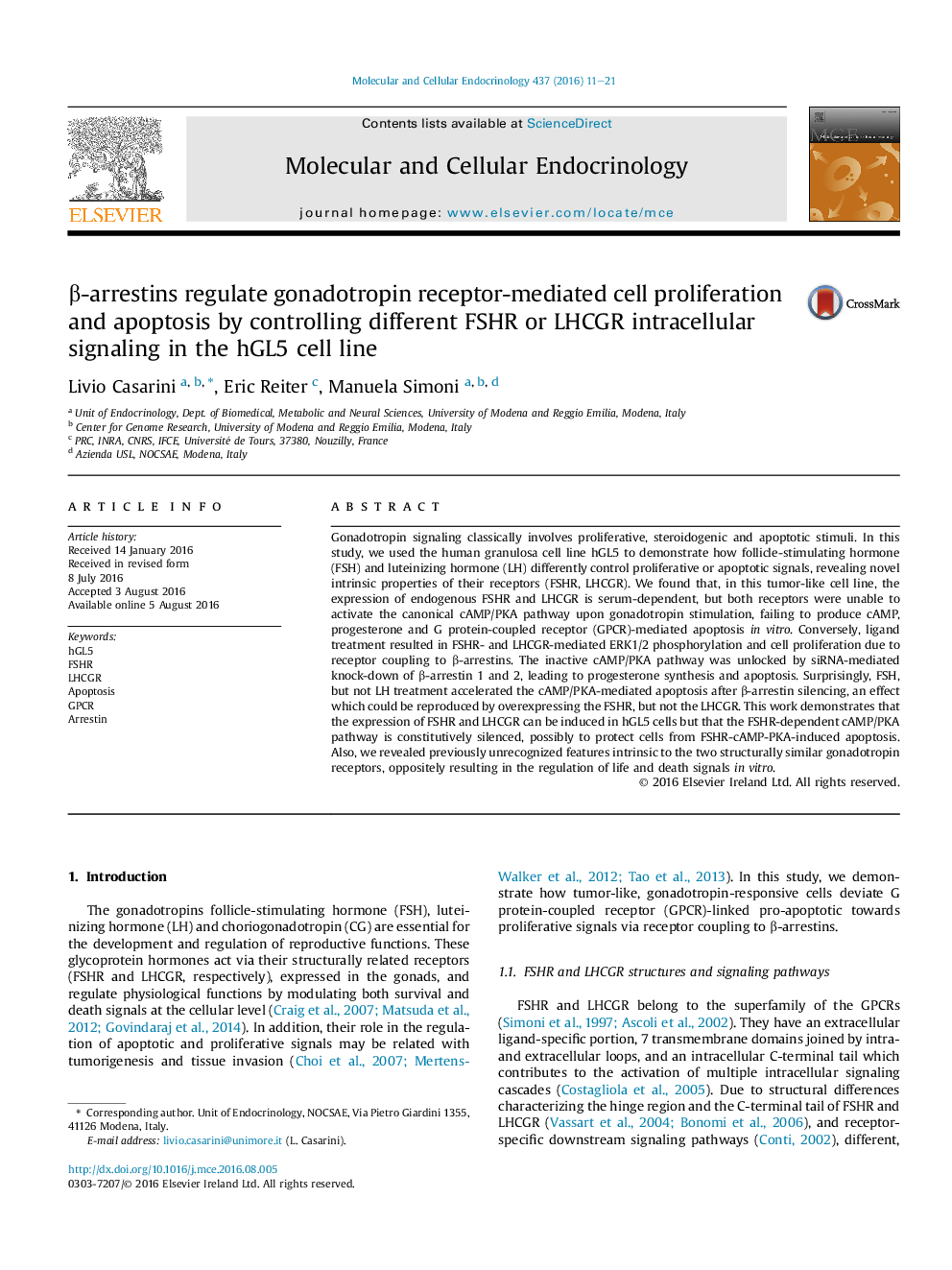| Article ID | Journal | Published Year | Pages | File Type |
|---|---|---|---|---|
| 8476669 | Molecular and Cellular Endocrinology | 2016 | 11 Pages |
Abstract
Gonadotropin signaling classically involves proliferative, steroidogenic and apoptotic stimuli. In this study, we used the human granulosa cell line hGL5 to demonstrate how follicle-stimulating hormone (FSH) and luteinizing hormone (LH) differently control proliferative or apoptotic signals, revealing novel intrinsic properties of their receptors (FSHR, LHCGR). We found that, in this tumor-like cell line, the expression of endogenous FSHR and LHCGR is serum-dependent, but both receptors were unable to activate the canonical cAMP/PKA pathway upon gonadotropin stimulation, failing to produce cAMP, progesterone and G protein-coupled receptor (GPCR)-mediated apoptosis in vitro. Conversely, ligand treatment resulted in FSHR- and LHCGR-mediated ERK1/2 phosphorylation and cell proliferation due to receptor coupling to β-arrestins. The inactive cAMP/PKA pathway was unlocked by siRNA-mediated knock-down of β-arrestin 1 and 2, leading to progesterone synthesis and apoptosis. Surprisingly, FSH, but not LH treatment accelerated the cAMP/PKA-mediated apoptosis after β-arrestin silencing, an effect which could be reproduced by overexpressing the FSHR, but not the LHCGR. This work demonstrates that the expression of FSHR and LHCGR can be induced in hGL5 cells but that the FSHR-dependent cAMP/PKA pathway is constitutively silenced, possibly to protect cells from FSHR-cAMP-PKA-induced apoptosis. Also, we revealed previously unrecognized features intrinsic to the two structurally similar gonadotropin receptors, oppositely resulting in the regulation of life and death signals in vitro.
Related Topics
Life Sciences
Biochemistry, Genetics and Molecular Biology
Cell Biology
Authors
Livio Casarini, Eric Reiter, Manuela Simoni,
